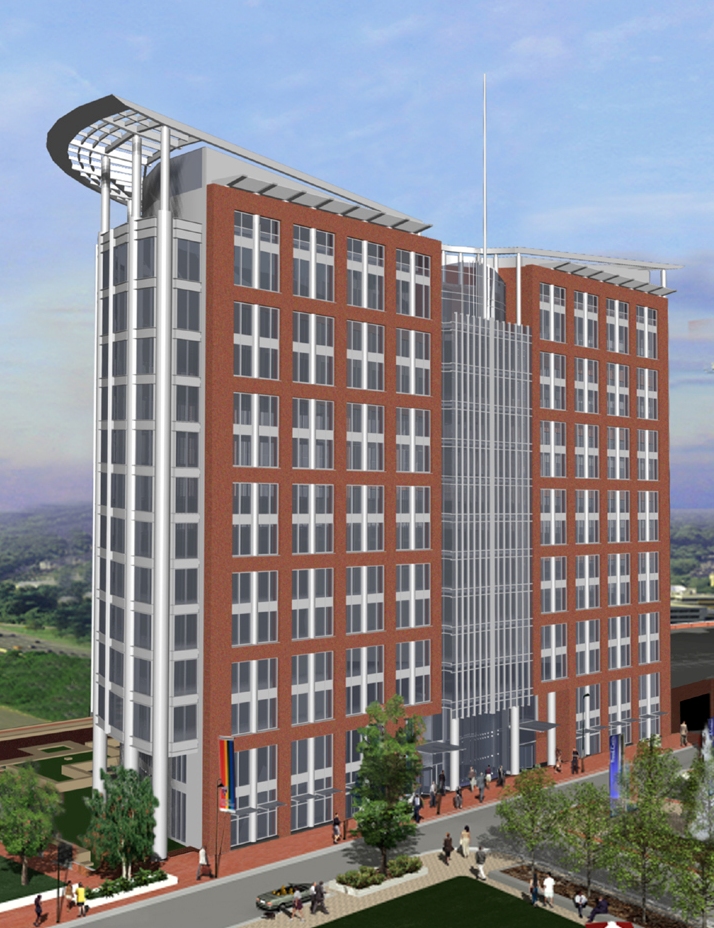Final Report
Towers Crescent Building F: Floor, Lateral System, and Foundation Optimization
In this thesis, the floor system has been redesigned as a one way post-tensioned slab with supporting edge beams. This was done in hopes of reducing material costs and contributing to lateral stiffness. Next, since the calculations in technical report 3 showed the lateral system to be inadequate to carry the design loads, seismic loads have been reduced through more rigorous analysis procedures and the stiffness of the lateral system has been more accurately determined. These analyses required construction of a 3-dimensional model. I have added tie beams to improve the performance of the shear walls, and investigated the possibility of making reductions in shear wall thickness. Next, since the addition of post-tensioning to the floor slab significantly reduced the building’s weight, I have investigated the possibility of reducing the size of columns and foundation elements.
Results are mixed. By the addition of post-tensioning to the slab, I was able to reduce its thickness from 8” to 6”, and thus achieve savings on materials. However, these savings would be offset by additional costs in time and labor. Furthermore, I was not able to reduce the floor to floor height, which is the greatest potential benefit of post-tensioning. Also, the changes which I made to the floor system required small changes which would make the mechanical system slightly more costly. All things considered, I would not recommend my slab design over the current one.
On the other hand, I would recommend the addition of shear tie beams. This should make possible significant reductions in the thicknesses of the shear walls. Though I was unfortunately unable to prove this, a wind tunnel test and a more rigorous determination of building lateral stiffness would provide the requisite proof. Next, I would also recommend downsizing many column and caisson sections, even if the current 8” slab is retained.
Lastly, I have produced an architectural rendering of the elevator lobby and an architectural floor plan for a typical office floor.
